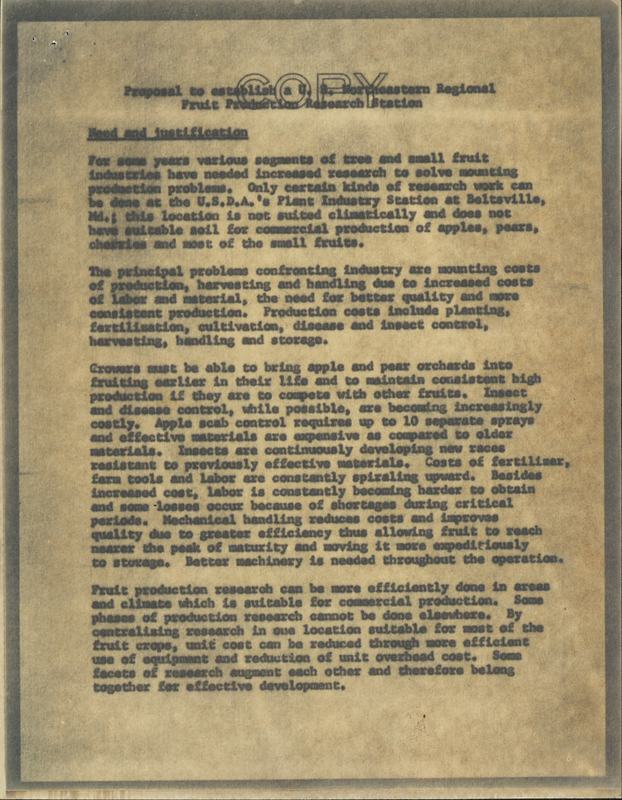Early in his first term in the United States Senate, Robert Byrd proposed the creation of a research laboratory to support West Virginia’s fruit-growing industry. In 1964, the freshman Senator successfully garnered an appropriation of $25,000.00 to study the feasibility of the proposed research station, imploring the Secretary of Agriculture to make the idea a reality. Despite gaining the Senate Appropriation Committee’s approval of the funding, the measure was removed from the bill in the House. Regardless, owing to his correspondence with Agriculture Secretary Orville Freeman, the department authorized the feasibility study and moved forward with the idea. Senator Byrd envisioned the fruit and berry research laboratory to study disease and blight control, pesticides, harvesting techniques and equipment, industry economics, and quality control. All of these areas of study could find solutions to the problems of growing production costs, quality control issues, and increasing labor costs faced by West Virginia fruit growers. Realizing the vital role of this segment of the state’s agricultural industry, the proposed laboratory was planned for the Eastern Panhandle at the heart of West Virginia’s apple growing region.
In the early-1970s, the project finally began to move forward when West Virginia University worked out a deal with the Department of Agriculture to provide land that it owned in the Kearneysville/Leetown Area for the laboratory and its test fields. An additional $200,000.00 was appropriated by Senator Byrd in 1972 to complete studies on the laboratory and in 1975, $7.5 million was secured to construct the new laboratory. In August 1979, Senator Byrd dedicated the laboratory, over fifteen years after he first proposed the idea. As a part of the dedication ceremony, Senator and Mrs. Byrd planted a beech tree at the laboratory.
Twenty years after the opening of the laboratory, Senator and Mrs. Byrd attended a special ceremony in 1999 for the unveiling of a newly-developed species of plum tree. The new variety was named the “Bluebyrd Plum,” and the senator noted in remarks at the ceremony that among the many things named for him during his career, this was the first time such an honor involved a fruit variety. The laboratory envisioned by Senator Byrd and the Department of Agriculture in the early-1960s continues to conduct valuable research today which supports fruit growers across the United States. Some of the areas of study originally included in the laboratory's mission continue today, including disease resistance and harvest management. Comments are closed.
|
Welcome to the Byrd Center Blog! We share content here including research from our archival collections, articles from our director, and information on upcoming events.
Categories
All
Archives
July 2023
|
Our Mission: |
The Byrd Center advances representative democracy by promoting a better understanding of the United States Congress and the Constitution through programs and research that engage citizens.
|
Copyright © Robert C. Byrd Center for Congressional History and Education
|





 RSS Feed
RSS Feed
